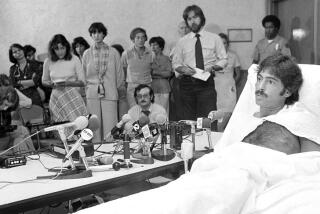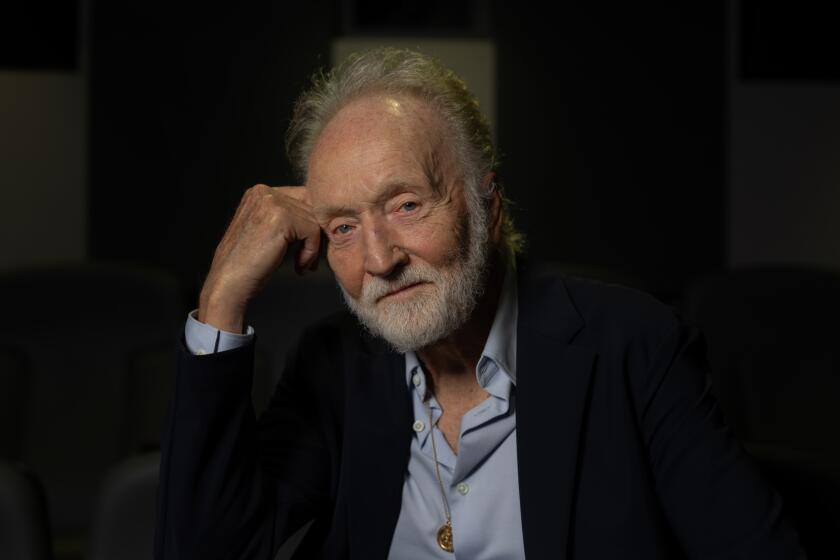A Second Look: ‘The Invasion of the Body Snatchers’
Invented by the novelist Jack Finney in the 1950s, the pod people — the soul-swiping alien forms attempting to take over the planet by replicating and replacing the human population as they sleep — have risen to the status of a modern American myth. In the movies at least, pod-dom has proved to be an eternally durable trope and an infinitely flexible metaphor.
Finney’s novel “The Body Snatchers,” first serialized in Collier’s magazine in 1954, has inspired four official adaptations (and many more uncredited rip-offs). It’s not hard to see why this paranoid fable on the dangers of conformity would prove irresistible to generations of storytellers, given its capacity for alternative interpretations and double meanings, its ability to reflect a larger cultural and political relevance no matter the period.
The allegorical potency of Cold War science fiction — by now the subject of much critical and scholarly writing, perhaps most famously in Susan Sontag’s 1965 essay “The Imagination of Disaster” — is nowhere more evident than in the original “Invasion of the Body Snatchers.” Directed by Don Siegel in 1956, it has become one of the most closely dissected genre movies of all time, inspiring contradictory readings from both ends of the political spectrum.
“Invasion of the Body Snatchers” has just been issued on DVD andBlu-rayby Olive Films (and it would make an intriguing double bill with another new Olive release,”High Noon,”also a politically ambiguous Hollywood classic of the 1950s). While “Invasion of the Body Snatchers” is clearly a portrait of individualism under siege, the nature of that threat is open to debate.
To some the brainwashed pod people suggest a collectivized society, a communist state. But with their dead-eyed stares and moblike behavior, they could also be seen as embodying the most sinister tendencies of the Eisenhower-McCarthy era.
Screenwriter Daniel Mainwaring (whose other credits include the noir classic “Out of the Past”) hews to the outline of Finney’s story: Miles Bennell, a small-town California doctor played by Kevin McCarthy, is contending with what looks like a hysterical epidemic, a wave of patients suddenly convinced that their loved ones are … not quite themselves.
But with a few strategic changes, Mainwaring, a leftist who was blacklisted at one point, also made the film considerably more pessimistic than the book (which ends with the defeat of the aliens). The love story — Miles’ rekindled romance with an old flame (Dana Wynter) — has a much more chilling outcome in the movie. And in Siegel’s original cut, Miles is last seen rushing into oncoming traffic, issuing an unheeded warning: “They’re here already! You’re next!”
When the studio, Allied Artists, complained that the conclusion was too bleak, the filmmakers appended a perfunctory framing story and a less than persuasive happy ending.
Taken together the “Invasion” movies amount to a collective portrait of the American psyche over a half-century, reflecting shifts in the national identity and self-image, in notions of community, in popular attitudes toward psychiatry (in each film a mental health professional treats the first wave of people who believe there are impostors in our midst).
Philip Kaufman’s 1978 iteration, also called “Invasion of the Body Snatchers,” changes the setting to a post-utopian San Francisco, and fittingly this Me Decade update is less about the political than the personal. In the first film, the pod people try to sell Miles and Becky on the benefits of an emotionless existence (“Life is so simple”).
One of the most memorable characters in Kaufman’s version is a platitude-spouting self-help guru, played by Leonard Nimoy — one of the film’s sneakier jokes is that we can’t tell when exactly he became a pod.
The most stylized and visceral of the lot, Abel Ferrara’s “Body Snatchers” (1993), set on a military base and including references to Operation Desert Storm, zeroes in on the domestic sphere. The protagonist is a moody teenager (Gabrielle Anwar), and so the struggle against the pods becomes a coming-of-age battle against adult conformity.
Apparently unloved by its distributor, Warner Bros., “Body Snatchers” sat on the shelf for ages and was barely released. Which makes it even stranger that Warners was also behind 2007’s “The Invasion,” a Nicole Kidman vehicle credited to director Oliver Hirschbiegel but body-snatched by the studio, which reportedly tasked the Wachowski siblings and James McTeigue with a re-edit.
It’s telling that this most recent (and by far weakest) adaptation is filled with gratuitous references to the geopolitics of the post-9/11world: By now the mere presence of pod people is synonymous with topical relevance.
Siegel himself — as well as many associated with the original “Body Snatchers,” including Kevin McCarthy and producer Walter Wanger — said they never thought of it as a political parable. Perhaps for that reason, their version remains the most Rorschach-like, the most richly suggestive of all science-fiction allegories.
More to Read
Only good movies
Get the Indie Focus newsletter, Mark Olsen's weekly guide to the world of cinema.
You may occasionally receive promotional content from the Los Angeles Times.










